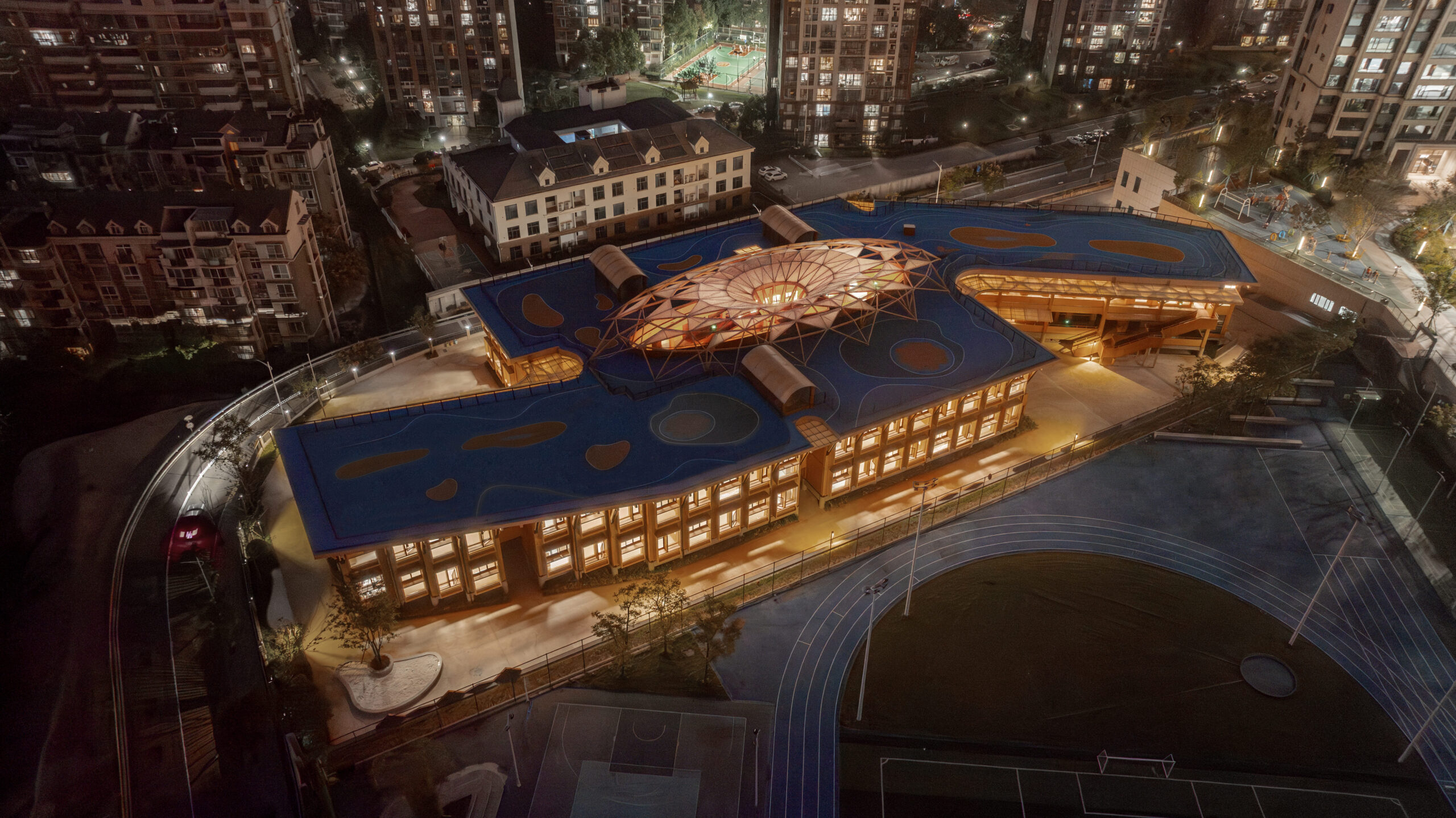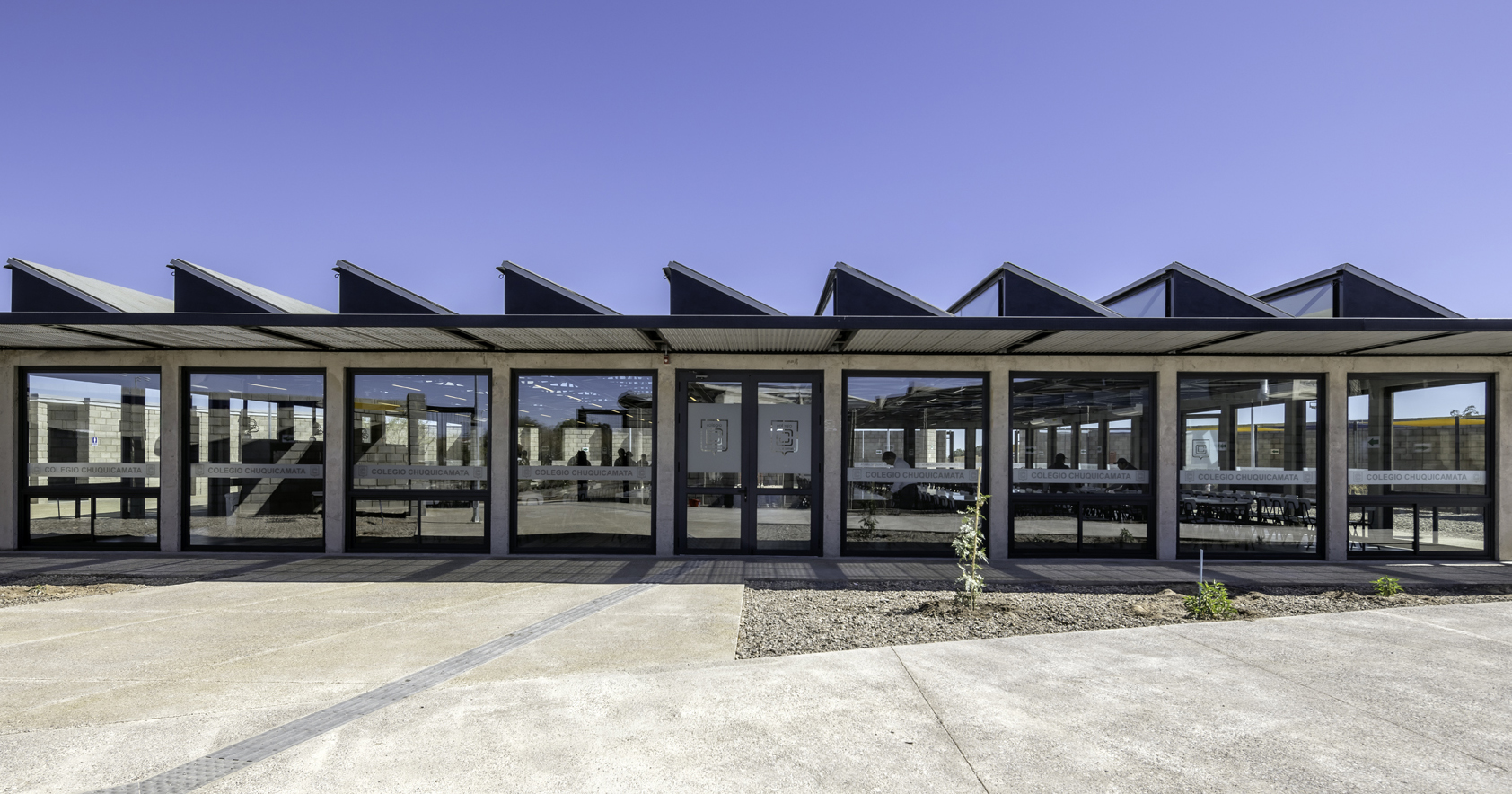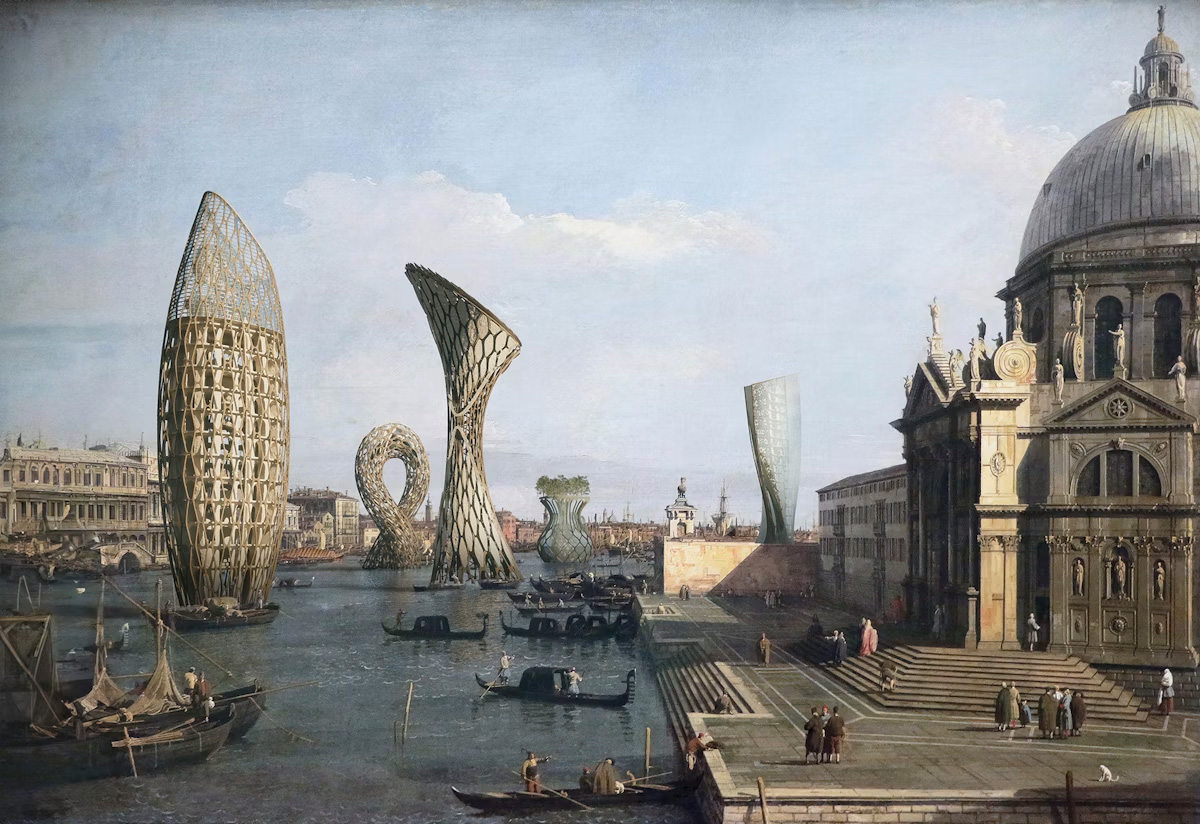The Serpentine Pavilion at 25: Zaha Hadid’s Legacy of Experimentation
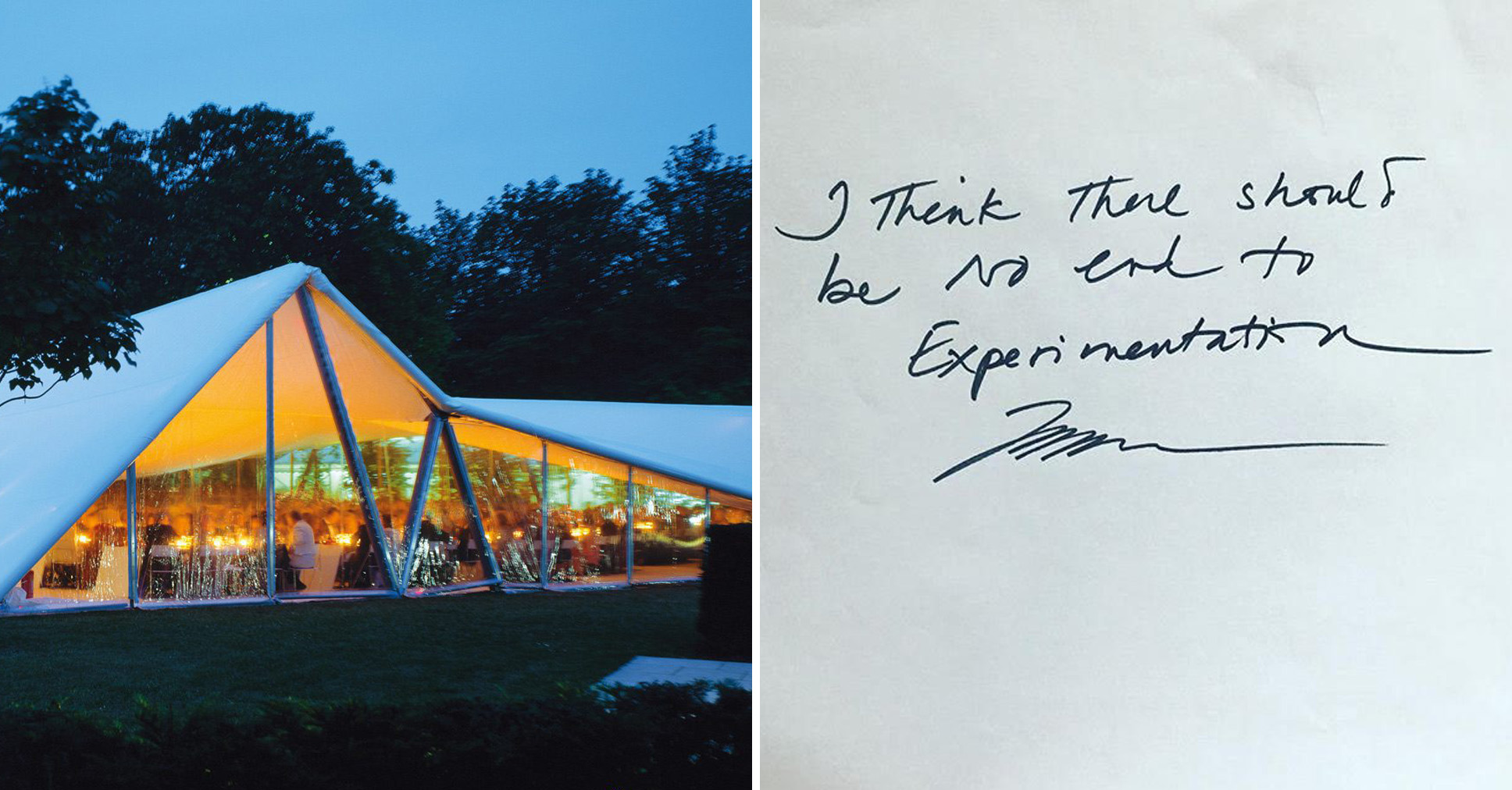
The latest edition of “Architizer: The World’s Best Architecture” — a stunning, hardbound book celebrating the most inspiring contemporary architecture from around the globe — is now available for pre-order. Secure your copy today.
Architecture has a problem. (Don’t we all?) In his classic 1984 essay “Postmodernism, or the Cultural Logic of Late Capitalism,” the philosopher Fredric Jameson wrote that “architecture is… of all the arts that closest constitutively to the economic, with which, in the form of commissions and land values, it has a virtually unmediated relationship.”
Unlike say, painting or modern dance, forms which maintain a degree of independence from the messy spheres of business and politics, architecture is as far as one can get from a “pure” art form. Even conceptual projects are expected to address social needs. An architect who was interested solely in the art of shaping space, and not in crafting buildings with some form of practical utility, would hardly be considered an architect at all. (cf. Is James Turrell an architect?)
If you are an architect, it is possible that you are already annoyed with this introduction, this parsing of definitions. While fine art has, for half a century, been dominated by ontological inquiry, architecture has not been. It couldn’t afford to be.
There is one yearly commission, however, that visitors are invited to consider as an object in its own right — an aesthetic experience set apart from the social, something to be contemplated alone, as one might a sculpture or installation. This is the Serpentine Pavilion in London’s Kensington Gardens, an annual summer project that invites a leading architect from around the world to create a temporary, experimental structure.
This year marks the 25th anniversary of the Serpentine Pavilion. The first summer pavilion was designed, fittingly, by Zaha Hadid, an architect who helped balance out architecture’s inherent pragmatism by introducing lyricism, romance and, of course, curves into her designs. The reason Hadid is so beloved is because her buildings are designed to be beautiful, first and foremost. One does not need theory to appreciate a building like the Heydar Aliev Center. It makes an immediate impression, like the Taj Mahal.

Serpentine Gallery Pavilion 2000 Designed by Zaha Hadid, Photograph © 2000 Hélène Binet
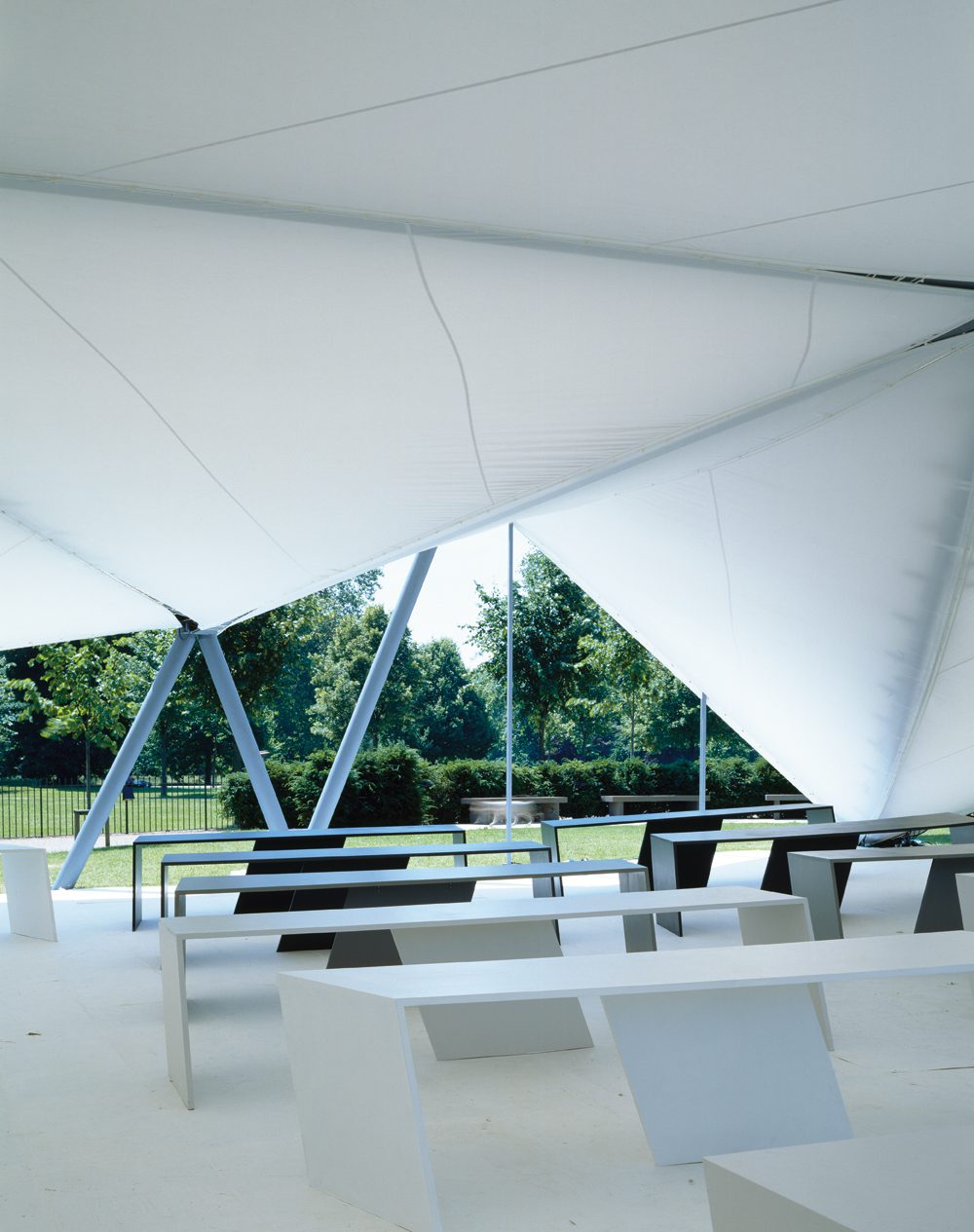
Serpentine Gallery Pavilion 2000 Designed by Zaha Hadid, Photograph © 2000 Hélène Binet
Hadid’s inaugural pavilion was uncharacteristically austere, a meditation on the concept of ephemerality. “Hadid’s structure radically reinvented the accepted idea of a tent or a marquee,” the Serpentine explains on their website. “It took the form of a triangulated roof structure spanning an impressive internal space of 6,460 square feet (600 square meters) by using a steel primary structure. A folding form of angular flat planes extending to the ground gave an illusion of solidity, while at the same time creating a variety of internal spaces.”
Hadid’s commission stood from 19 June through 3 September, 2000, right at the height of her career. The much publicized project helped cement her reputation as the leading architect of her generation. Its form is also referenced obliquely in her much more complex design for the Serpentine North Gallery, which opened in 2013.
Over the next 25 years, a new pavilion arose each summer in Kensington Garden, providing a space for visitors to explore and reflect on architectural ideas. Highlights have included Sou Fujimoto’s 2013 pavilion, a “shimmering matrix” constructed from a latticework of white steel poles that the architect described as a “transparent terrain.” Bjarke Ingels’ 2016 pavilion, an “unzipped wall” made from thousands of white boxes, was similarly unforgettable, as was Ai Weiwei and Herzog and de Muron’s 2012 construction, a meditative, subterranean space fashioned from cork that provided cool reprieve from the summer sun. In truth, out of 25 commissions, none have been a dud. Each proposed a totally new and creative approach to the same brief: a temporary summer pavilion for a public park. In this way, the Serpentine Pavilion continues to showcase the endless possibilities of architecture.

Sou Fujimoto Architects 2013 Pavilion was an exercise in minimalism and permeability | Photo by Jim Stephenson

2016 Serpentine Pavilion by BIG – Bjarke Ingels Group, London, United Kingdom
In Summer 2026, the Serpentine Pavilion will serve as the setting for a series of panel discussions on architecture. These talks will be hosted by the Zaha Hadid Foundation in collaboration with Serpentine, marking the 25th anniversary of Hadid’s inaugural commission. “The collaboration takes inspiration from Zaha Hadid’s enduring ethos, ‘There should be no end to experimentation,’” explained Serpentine in a press release. “As the architect of the inaugural Serpentine Pavilion in 2000, Hadid’s spirit of innovation has set the tone for what has since become one of the world’s most influential architectural commissions. This approach continues to shape not only the Pavilion series, but also Serpentine’s wider programme of exhibitions and live events.”
A preview of this upcoming speaker series occurred earlier this month with a discussion at the still-standing 2025 pavilion, Marina Tabassum’s A Capsule in Time. This talk featured former Serpentine Pavilion architects Lina Ghotmeh (2023) and Sumayya Vally (2021), in dialogue with curators Aric Chen and Hans Ulrich Obrist. Future talks will also feature former summer pavilion architects. The series promises to continue in the Serpentine Pavilion tradition of providing a forum for architectural thinking — without distractions.
The latest edition of “Architizer: The World’s Best Architecture” — a stunning, hardbound book celebrating the most inspiring contemporary architecture from around the globe — is now available for pre-order. Secure your copy today.
Cover image: Serpentine Gallery Pavilion 2000 Designed by Zaha Hadid, Photograph © 2000 Hélène Binet
The post The Serpentine Pavilion at 25: Zaha Hadid’s Legacy of Experimentation appeared first on Journal.






































